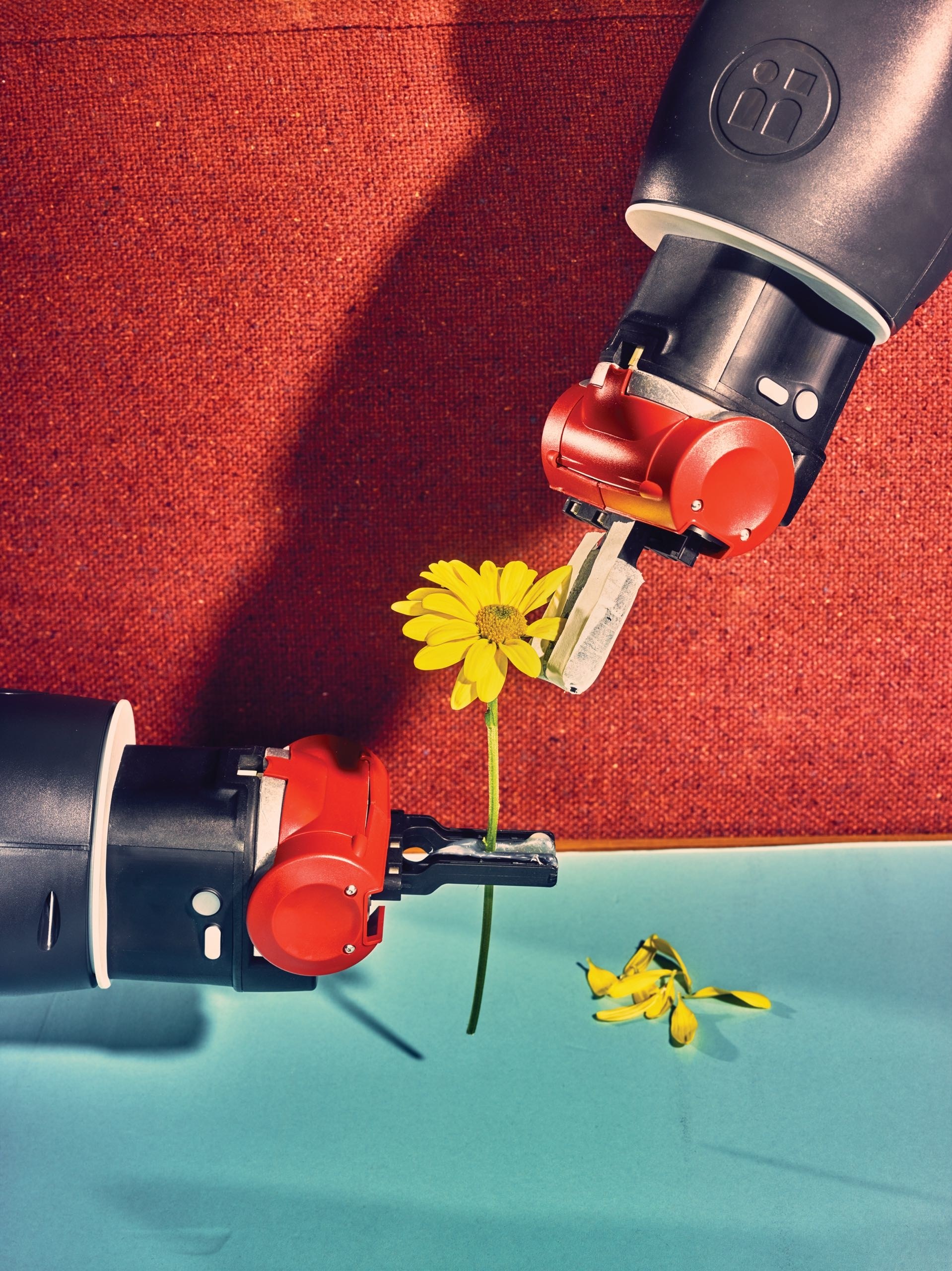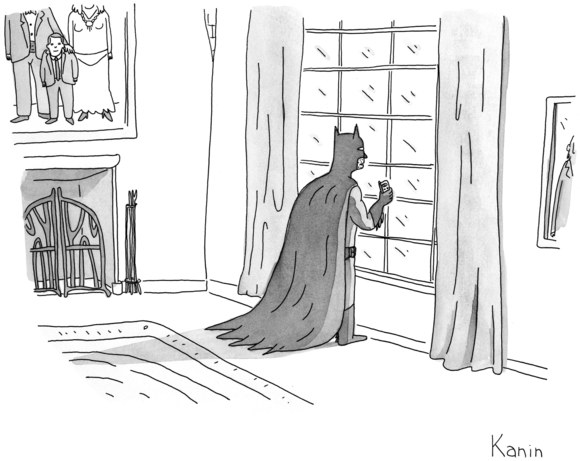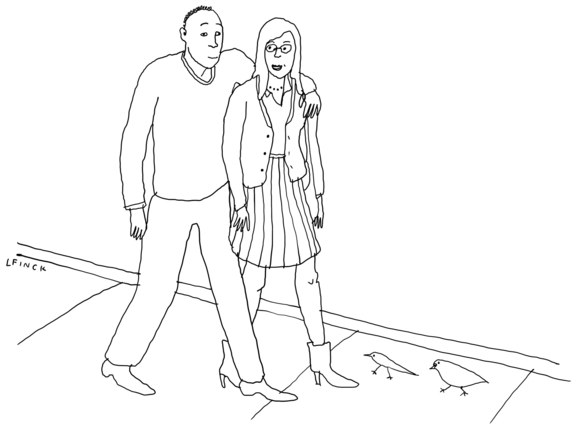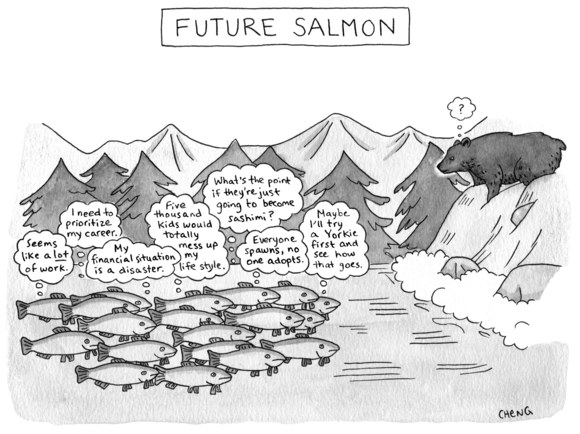
When David Stinson graduated from high school in Grand Rapids, Michigan, in 1977, the first thing he did was get a job as a builder. However, after a few years, the business slowed down. Stinson was then twenty-four years old, and he had two children. He needed something stable. As he recently said over lunch, this meant finding a job in one of two companies that provided safe jobs that did not require higher education. “Either I will work at General Motors, or I will work at Steelcase until the end of the year,” he promised in 1984. A few months later, he got a job at Steelcase, the world's largest office furniture maker, and has since been working at their steel mill in Grand Rapids.
Stinson is now fifty-eight. He has a full, reddish face, thick head, silvery hair and a magnificent neck. The name of his position - “Zone Leader” is written on his military shirt - and, like everyone else in the factory, he always has a pair of protective earplugs on a neon rope draped over his neck. His glasses have plastic flaps on the sides, which give him the appearance of a capricious scientist.
“I don’t regret coming here,” Stinson said. We sat in the cafeteria of the factory, and Stinson unwrapped an Italian sandwich from a local eatery, which every Thursday offers factory workers sandwiches for four dollars instead of eight. “There were times when I thought about quitting, but here everything becomes more comfortable. These technologies help you. Instead of taking responsibility from you, they help you. This is definitely the wave of the future. ”
William Sandy Jr., a sixty-five year old worker on the paint line, sat down next to Stinson with a box of french fries and a cup of ketchup and threw his goggles on the table. “We're trying to have some fun,” he said in a low voice. "We are very tense."
Sandy, combining gray hair and a watchful owl face, began working at Steelcase in 1972, after waiting for six hundred people to submit an application. “Being an employee of Steelcase was very profitable then,” said Sandy. Plant managers, as we know, drove fashionable cars and located second homes on the lake; the company paid for college education for the children of employees who often spent the summer working at local factories, there were picnics for the company and a bowling tournament, which once had fifteen hundred players. (The tournament is still being held, now there are about three hundred participants.)
In the nineties, Steelcase took over ten thousand workers in the United States and ran seven factories around Grand Rapids, creating chairs, filing cabinets, desks, and screws, bolts, and rollers that made them up. Shoulder to shoulder, workers polished and painted wood and assembled steel parts by hand. Today, there are only two Steelcase plants in Michigan - a metal plant that creates desks and filing cabinets, as well as a neighboring "wood production plant" that produces wood furniture. In total, they use less than two thousand workers. The only US factory in Astana, Alabama, employs a thousand full-time workers.
The history of Steelcase is in many ways the history of production in America. The company was founded in 1912 with a single product, a fire-resistant metal dustbin. As the economy raged over the coming decades, America's developing corporations were to fix their offices with desks, shelves, and cabin walls. “If you were a high school student who grew up in Grand Rapids in the eighties, you didn’t want to go to college, and you got a job at a factory in Steelcase, you were well organized,” said Rob Kirkbried, who for two decades press releases in Grand Rapids and in industry publications. "It was like a lottery win."
 “Memoirs, chapter 1. From time to time, I think I may never fully recover from the death of my parents ...”
“Memoirs, chapter 1. From time to time, I think I may never fully recover from the death of my parents ...”Then the dot-com bubble burst and countless startups auctioned their office furniture. By 2001, Steelcase lost a third of its sales and began closing factories throughout western Michigan. Its production was moved to Mexico, China and, ultimately, to India. In 2011, the company announced a new series of closures and layoffs, closing another plant near Grand Rapids, one in Texas and one in Ontario, Canada. Almost all of the company's production was relocated to Mexico.
These days, when US companies report record profits and demand millions of new jobs, Steelcase is on the rise again. Its corporate headquarters, located in a refurbished factory, is a laboratory of trends in the workplace, with open floor plans and glass shells, where people recline on their laptops or hang on standing tables. At two plants in Michigan that remain open, employees create metal components for furniture sets and conference tables in dozens of shades of wood veneer.
Since technology makes work faster, more efficient and more environmentally friendly, products are created with far fewer workers. “Companies obviously don’t send out press releases saying,“ We don’t hire more people, ”but that's what I hear on the street, said Kirkbread. There are automatic assembly lines and robotic arms raising tabletops that were once pushed by men. Stinson took me through the dense wall of machines and past the giant fixture that makes cardboard boxes, so the plant should not order them. “You can just punch it on the touch screen and go, I need 86-17, boom boom boom, I need fourteen of them. Press the button and she will cut it to you, ”he said. “These things are really cool. So it’s not that we eliminate work, we destroy waste. ”
As the leader of the zone, Stinson is responsible for approximately fifteen employees at the site of the production line, which makes parts for Steelcase steel panels of the “Ology” series, height-adjustable, which are made for the special design. Until last year, factory workers had to consult a long list of steps, making every effort to find the right parts from a basket full of bolts and screws and a different size, and insert each one into the right hole and in the right order. Now the computerized workstations called “Vision tables” dictate, step by step, how workers assemble furniture. This process is almost error-free: the system will not allow workers to perform the wrong step. We stood behind a young woman in a polo shirt and lycra shorts with a long blond tail. When the step was completed, the light turned on over the next necessary part, followed by a beep. Scanners tracked everything as it happened, displaying the collected data to invisible engineers using the iPad. Employees who follow the strictest automated protocol - some call them "meat robots" - have learned little. Even the drill was attached to a computerized hand; the worker simply had to move him to the desired position and allow the machine to do his magic. Ten years ago, industrial robots helped workers in their tasks. Now the workers - those who remain - help the robots in them.
For decades, the generally accepted view among economists has been that technological advances create as many opportunities for workers as they do. However, in the past few years, researchers have begun to suggest the opposite. “It's not that we’re running out of jobs or professions,” said David Aukor, an economist at MIT, who studies the effects of automation on employment. “But a subset of people with low qualifications may not be able to count on a reasonable standard of living based on their work. We already see this. ” As automation reduces wages, jobs in factories become less numerous and less attractive.
This process, the author and other economists say, can also exacerbate inequality. The labor market is built around the idea of a labor shortage: each person has an aggregate of labor - his own potential for work - what employers need and what he can sell on the labor market through work during a thirty-year career or so. This model is destroyed. “This does not mean that there is no money, but they simply recruit capital owners, owners of ideas,” the author says. “And capital is distributed less fairly than labor. All are born with some difficulty, but not all are born with capital. ”
At the Steelcase metallurgical plant, automation has led the company to search for more educated managers who are expected to receive a higher education, and not just a high school diploma. The company, following the model of "lean production" created by Toyota, attracts young engineers to scan factory data for additional "efficiency", which can lead to further automation. For people with technical degrees and capable of managing automated systems, as well as for owners of companies that are in the process of automation, the potential for increasing wealth is significant. But for less skilled workers, this is a completely different story. In an article published earlier this year, economists Daron Azemoglu of the Massachusetts Institute of Technology and Pascual Restrepo of Boston University studied local labor markets in the United States from 1990 to 2007, and they found that the concentration of industrial robots in the area was directly related with a reduction in jobs and wages. Technology can exacerbate the effects of globalization. By one measure, the average worker in the United States earned nine percent less in 2015 than the average worker in 1973, while the economy grew by two hundred percent. In Steelcase, Stinson acknowledged, workers earned about the same salary in dollars as in 1987.
Neither Stinson nor Sandy thought that automation poses a threat to their work. Sandy recalls when Frank Merlotti, the legendary figure in Steelcase, retired as president and CEO in 1990, often visited the factory with joyful performances. “Frank would look at you, and he would say that before he even said a lot,” Sandy recalls. “Listen,” he said, “it’s you, everyone around, who are doing this job, who made it possible.”
Sandy ardently speaks of the dignity of manual labor. He told me about the trip he had with his grandchildren in New York, where they visited the Empire State Building. “You probably saw this picture, these guys, where they sit there on this arrow, there, they have lunch together,” said Sandy. “And they had different rivets and stuff.” But rivets, in my opinion, were people. ” He seemed to be describing a famous black and white photograph called “Lunch in a Skyscraper”. “It was one of the most enjoyable things I saw there, from all of New York, those were the old-timers. The construction of this building. How did they do it, you know? This is amazing."
According to Sandy, there was something irreplaceable in the combination of reasonable judgment and human hands. Think of all the things that robots could not do: get their hands on things; unpack the box; Tie a Tie. Even in the automatic future, he thought, you would need people to apply the wisdom gained from age and experience. “You will still need people,” he said. “Someone still needs a person who will have to do everything. And tell us when this machine does not want to work as it should.
Humans to Robots Laboratory at Brown University is located on the first floor of a red brick building in the center of Providence, Rhode Island. She has the appearance of a large garage filled with painted, rough sofas and scattered gadgets and toys. A robot with bulky red hands was going to pull petals from an artificial daisy. The robot, known in the laboratory as Winnie, held a flower in a pair of rubber tips, then pulled off his other hand, turned it slightly, and pointed to a daisy. He made the sound of idle, as if contemplating what to do next. Then the hand jerked to the flower, grabbed a petal and threw it on the table. He removed it again with a mechanical sound. The movements resembled a prehistoric bird.
The lab was created by Stephanie Telleks, a computer science professor who is studying ways to create robots that can work together with humans. “In general, my research program is the creation of robots that can work with people on complex tasks,” Tellex told me. "We are trying to make robots that can reliably perceive and manipulate objects in the environment."
 "I can't wait to introduce you to all the people I was friends with before I started spending time with you."
"I can't wait to introduce you to all the people I was friends with before I started spending time with you."The word "manipulate" is often used among engineers. Even in highly automated factories, workplaces involving packaging boxes or stacked tiny pieces are performed by people. The best robot, when confronted with an object that it has never seen, can pick it up only in ninety percent of cases, which is not enough for industrial purposes.
Solving this problem — learning the machine to handle a random collection of objects of irregular shape — would have a huge impact; Tellex provides machines that change diapers and prepare dinner. In her class, “Themes in Joint Robotics,” one student suggested teaching the robot how to make a salad. “This is very difficult and probably not very economical,” said Josh Roy, a Tellex assistant. "We joked that we can make a salad with thirty thousand dollars with a robot." Part of the task, regardless of the task, develops the “end effector” —a hand tool at the end of the robot arm — that can capture various shapes and sizes with different pressure levels. The more difficult part and the part that Tellex is passionate about involves the robot learning how to perceive different objects so that he understands what he has to do.
Winnie was programmed by one of the Tellex students, Rebecca Pankow, a PhD freshman with bright brown eyes and dimpled cheeks. “This is not very sophisticated,” said Pankow, when Winnie continued to pull the petals. "This is more of a proof of concept." She continued: “I chose this project because I thought it was an interesting computer vision problem. This applies to other things that I work with outside of class. And I just thought it was very cute. ”
An industrial robot will again and again lift the same object in the same place. The challenge and multi-billion dollar business opportunity was to teach the robot to function in an environment that was constantly changing. This was Vinnie's task. “There is a saying in robotics: everything that a person can do after five years is very simple for a robot,” one of the Tellex students told me. “Learning to play chess, no problem. Learning to walk - no way. "
John Oberlin, another PhD student who wore a long brown ponytail, goggles and woolen sandals, bent over the computer on the side table. The screen showed that Vinnie "saw" through his hand-held camera. “If I tried to take this tape again and again,” Oberlin picked up and dropped the roll of masking tape - “it exists only in one way, on the table,” he told me. “So I can just remember what it looks like, and then all I need to do is search around the space. But the petals on this flower can fall in more than one way. Sometimes they can be rotated slightly, sometimes they can fall, sometimes they can bend, they are deformable. And they are initially harder to localize. "
Pankou updated the artificial flower with small magnets on the petals so that they can be reconnected and reused. “The camera is currently photographing the table,” she said. “Then you put the flower there, and he will take the picture again. And he will say: "Oh, look at the difference between the two - a flower has appeared."
Winnie stretched out his hand, she squeezed the tongs around the petal, tore it, and then threw it on the table, and then returned to idle. The cycle continued until there was only one petal. He stuck out very uncomfortable, and Winnie’s hand had been hovering over him for a long time. Pankou and Oberlin watched nervously.
Winnie stirred, his hand slightly trembled and went to the outside of the flower in such a way that it was unlikely to succeed. The grippers opened, trying not to close the petal. Then the hand rose again.
Oberlin adjusted the flower. “I bet this will help a bit,” he said. This time, Vinnie managed to remove the last petal.
, , . « , , », – . « ».
«, – , . « . . , . . « ? ? . . And that's cool. ».
– , , . . , , , , . , – , , .

« : ?» – . « , ?»
, . – , , , . Ahold Delhaize, Stop & Shop Peapod , , . , , , , – - , – , , , , , , , . , , . - « ».
. , , . , , , . , , , . , , , . , . .
« » , . « , – , , », – . « , , . , . , . , , ». , , , , () .
, , . , , . . Steelcase , , , , , . , , . - , , . , , .
. - , , , . – , , – , - . : « ? , , – , ? , . ». , , . ?
, . , , , . , , , , , , . , , , , – , , .
, , , . «Rodon», - . 1956 , : , , , .
Rodon « », Lego Fischertechnik – K'Nex. K'Nex Rodon, Hasbro. Hasbro, , , K'Nex. : , , . , , , .
, CEO K'Nex Brands Rodon, , , . Rodon , . , , , , . : K'Nex , . K'Nex , , .
, . . 24 , , , , , , . (, , .) , . -, , . , , .
« » , , . , , ; , , . , 2014 , . 24 . , , , , . , , – , . Steelcase, . , - , , : « ».

, – , « ». Rodon K'Nex made in USA . Hatfield 2012 ; 2016 . « , , », – . « , ».
- , , : « , : « , ». : «, ? , ». : « , , , , . – , , . – , ».
, Hatfield , . ( Rodon , .) , , . , , . , : K'Nex - Cathay Capital. , , .
« , – . « , , , , . . , , , . , ».

